by William Shakespeare
adapted by Rosa Joshi and Kate Wisniewski
directed by Rosa Joshi
Ashland, OR
at the Oregon Shakespeare Festival
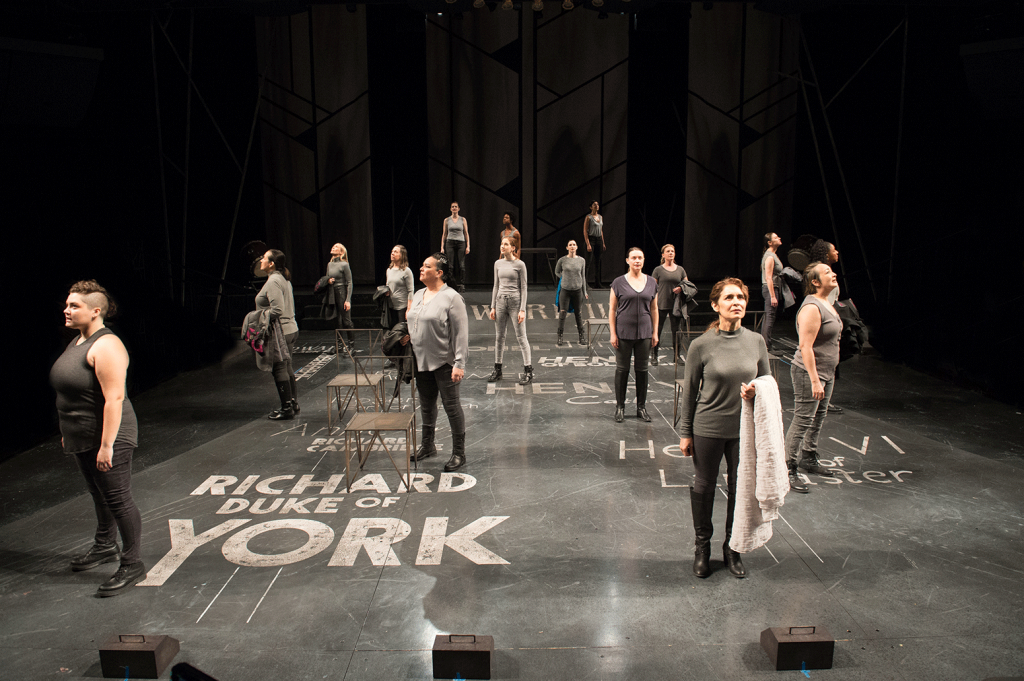
Ensemble Photo by Jenny Graham Oregon Shakespeare Festival
Through a scheduling snafu I missed the opening of Bring Down the House, Part I and took up the Henry VI story halfway through. Because co-adapters Rosa Joshi and Kate Wisniewski have done such a good job of curating scenes and speeches, I fell right into the story, despite the potentially confusing rush of characters and battles.
I had a fun time watching the alliances among the red rose and white rose nobles. I enjoyed the progressive terminal weakness of Henry (Betsy Schwarz) and the frustration of his queen, Margaret (Vilma Silva). York (Catherine Castellanos), Edward (Brooke Parks), and Warwick (Kate Wisniewski) grab the story, move it forward — or switch it up — with decisiveness and clarity.
I confess that the crispness of the story line has gone from my mind in the two weeks since I saw the production, but at the time it was crystal clear who was doing what to whom and why. There was a terrible, logical march of activity. The characters and action were the cleanest I’ve seen in a Henry VI.
The set design by Sara Ryung Clement helped. Unlike the convoluted, endlessly plotting plot that only a contemporary of Shakespeare would instinctively understand, the stage for Henry VI is both simple and helpful. The design is mostly bare which allows the performers to describe the events, react, and act without distraction. There is way more than enough opportunity for confusion in the play without having competition from busy scenery.
Even more helpful, the family tree of the protagonists was written on the floor. Throughout the show you could glance and visually check the various relationships being discussed. At some points, the actors added more family boxes in chalk to emphasize the family complexities. The approach is novel and brilliant.
The worst aspect of Bring Down the House, Parts I and II is the unfathomable decision to change the title from Henry VI. Changing the title falsely conveys the idea that this production changes Shakespeare’s language or story. It doesn’t.
It’s common for directors to “adapt” Henry VI‘s three parts into just two. Moreover, productions of Shakespeare nearly always have cuts and maybe even some reordering of scenes. Cutting and reordering is what was done by Joshi and Wisniewski for Bring Down the House. They did it extremely well. BUT, the words and plot are pure Will.
I have heard some people wonder if they could count Bring Down the House as part of the canon. I hesitated buying a ticket myself because I am not sure I want to see Shakespeare rewritten. All of this worry is unnecessary. Bring Down the House IS Henry VI.
The other concern for traditionalists is the casting. All of the actors are female or non-binary.
“That decision had a double purpose: to serve the social justice mission of [the adaptors’] company, upstart crow collective, which is to open up opportunities on the stage for non-binary and women actors; and, simultaneously, to underscore the plays’ depictions of gender in ways that would resonate with a modern audience,” explains OSF’s blog post “Adapting to Change“.
Regardless of their gender, the actors play their parts strongly and traditionally.
My quibble is that the public deliberateness of a gender-bending cast violates Checkhov’s gun rule: “If in the first act you have hung a pistol on the wall, then in the following one it should be fired. Otherwise don’t put it there.”
But, ultimately, traditionalists can again relax. The cast is superior, Shakespeare’s text and intent is unmolested, and the Yorks and the Lancasters tear down their houses quite thoroughly.
My one wish is that Joshi had shortened the choreographed battle scenes. They are over-styled and go on too long. Her Henry V had the same problem. We don’t need to see the horrors of war so slowly and eloquently displayed.
But overall, Bring Down the House, Part II is an engrossing study of flawed characters unable to stop themselves from destroying their families. This OSF production is powerful and memorable.
Ozdachs rating:![]()
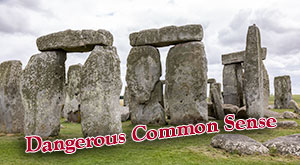

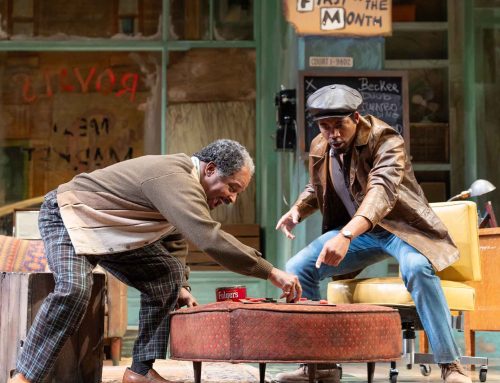
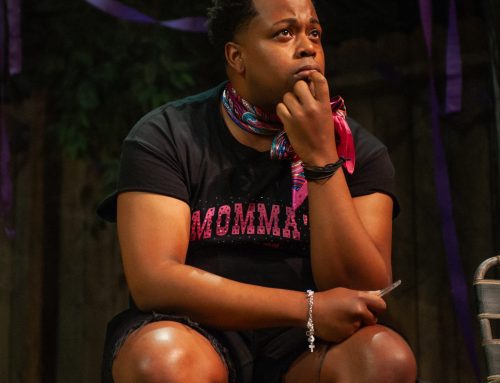
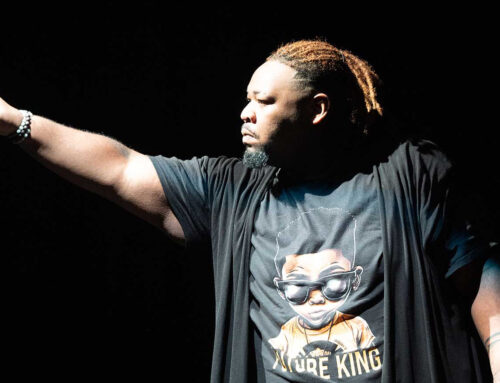
Leave A Comment